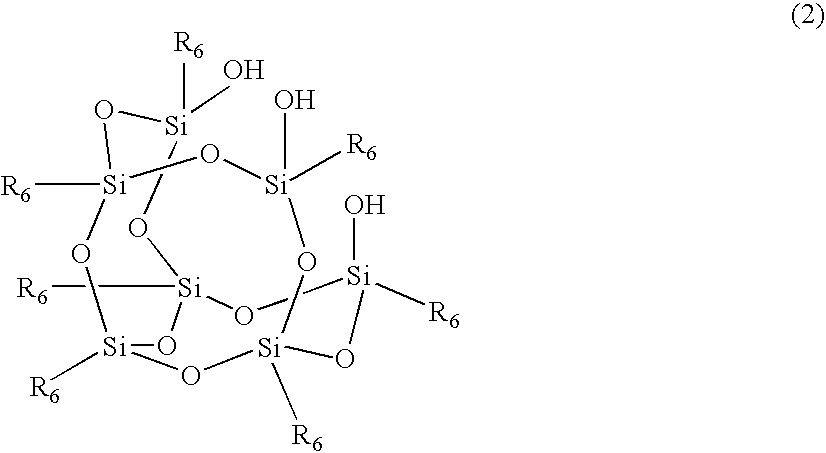Dielectric/barrier rib composition for plasma display panel and manufacturing method thereof
a technology of dielectric/barrier rib and plasma display panel, which is applied in the direction of instruments, address electrodes, static indicating devices, etc., can solve the problems of deterioration of dielectric performance, difficult to obtain a low temperature calcination type transparent dielectric material without adding an excess amount of pb, and defective display panels
- Summary
- Abstract
- Description
- Claims
- Application Information
AI Technical Summary
Problems solved by technology
Method used
Image
Examples
example 1
[0042] To PDMS having a vinyl group (molecular weight: 28,000, Bayer) was added 5% by weight of 2,5-dimethyl-2,5-t-butylperoxy hexane (Aldrich) as a cross-linking agent. The mixture was then coated to a thickness of about 30 μm on a glass substrate having ITO vapor deposited thereon using a spin coating or bar coating method, and then cross-linked at a temperature of 150° C. for 1 hour to prepare a dielectric. DC (direct current) breakdown voltage of the dielectric was measured according to ASTM D149. Each electrode had a spherical shape with a diameter of 12.7 mm, and a short period test method was used in which voltage was applied constantly to a test electrode starting at 0 volt and increasing until dielectric breakdown occurred. The dielectric constant was measured with an LCR meter, and transmittance was measured using UV-visible spectroscopy (see Table 1).
example 2
[0043] 10 g of polydimethylsiloxane bis(3-aminopropyl) terminated (molecular weight: 27,000, Aldrich) and 2.2 g of pyromellitic dianhydride were dissolved in 30 g of N-methyl-2-pyrollidone and were subjected to a condensation reaction under nitrogen atmosphere for 12 hours to prepare polyamic acid solution. The resulting solution was coated in the same manner as in Example 1 and cured at temperatures of 100° C., 200° C., and 300° C. for 1 hour, respectively, to obtain a polyimide-siloxane dielectric having a thickness of 20 μm. The subsequent procedure is the same as in Example 1.
example 3
[0044] Divinyl siloxane bis-benzocyclobutene (Dow Chemical) was coated on the ITO coated glass substrate using the same manner as used in Example 1 and then cured at 180° C. for 2 hours to prepare a dielectric film having a thickness of 20 μm. The subsequent procedure is the same as in Example 1.
PUM
| Property | Measurement | Unit |
|---|---|---|
| thickness | aaaaa | aaaaa |
| temperature | aaaaa | aaaaa |
| DC breakdown voltage | aaaaa | aaaaa |
Abstract
Description
Claims
Application Information
 Login to View More
Login to View More - R&D
- Intellectual Property
- Life Sciences
- Materials
- Tech Scout
- Unparalleled Data Quality
- Higher Quality Content
- 60% Fewer Hallucinations
Browse by: Latest US Patents, China's latest patents, Technical Efficacy Thesaurus, Application Domain, Technology Topic, Popular Technical Reports.
© 2025 PatSnap. All rights reserved.Legal|Privacy policy|Modern Slavery Act Transparency Statement|Sitemap|About US| Contact US: help@patsnap.com



